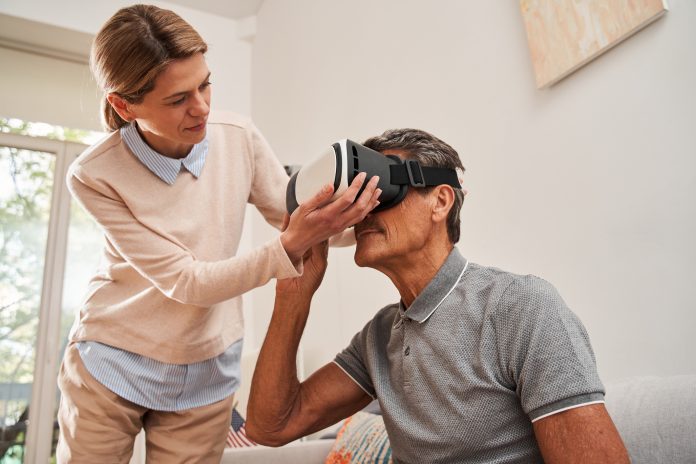
Rehabilitation programs that use either immersive or non-immersive virtual reality (VR) systems may improve adherence and be better tailored to patient needs than standard rehabilitation for cancer survivors, suggests a review of published data.
The review, by Antonio Giordano, president of the Sbarro Health Research Organization at Temple University in Philadelphia, and colleagues looked at nine studies among cancer survivors undergoing rehabilitation for post-mastectomy lymphedema or arm and shoulder impairment, chemotherapy-induced polyneuropathy, cancer-related fatigue or depression, or worsening physical performance as a result of chemotherapy and hematologic malignancies.
The VR systems included Nintendo Wii games, Xbox Kinect games, an immersive VR headset, a robotic rehabilitation table, and non-immersive VR software connected to triaxial accelerometers, gyroscopes, and magnetometers.
Giordano told Inside Precision Medicine that although VR is gaining popularity for rehabilitation in general, few studies have looked at its use among cancer survivors. “With our review, we tried to stimulate a discussion on whether VR rehabilitation may be particularly fit for the specificities of cancer patients,” he said.
Many of the chronic symptoms experienced by cancer survivors have been shown to benefit from rehabilitation, but referral rates to rehabilitation programs are low, and once referred, patients often discontinue because they find the training tiring or frustrating.
“What VR allows by adding fun and game-like features [is that it] helps visualize the progress through rewards and setting goals and challenges. In addition, VR allows replicating real-life scenarios, helping cancer survivors to visualize the daily-life situations they want to get back to and the autonomy and self-confidence they wish to recover,” Giordano remarked.
He added that other advantages of VR programs include the fact that they can be carried out from home with the use of telemedicine and that many of the devices used are already in people’s homes.
The review found that cancer-related pain was significantly improved in two of the four studies that investigated this outcome. In addition, both studies that measured fatigue showed significant improvements with the use of VR interventions, as did the single study that measured cognitive impairment.
The results were mixed for motor performance, with two studies reporting a significant benefit with VR rehabilitation and another finding it inferior to standard rehabilitation for some outcomes.
None of the studies found a statistically significant effect on lymphedema, however.
Just two studies looked at adherence rates, both using a Nintendo Wii Fit, but neither compared it with standard rehabilitation. The first study, aiming to improve worsening physical performance, reported an adherence rate of 66.5%, while the second, among people with people with post-thoracotomy cancer-related fatigue, had an adherence rate of 87.6% by the end of the study.
Giordano believes that “VR rehabilitation may tailor to the needs of cancer survivors.”
He says: “Thanks to technological development, VR programs can satisfy the need for home-based rehabilitation, improving motivation, and a multimodal approach to tackling their disability, which often results from more than one impairment.”
Furthermore, devices, such as treadmills, smartwatches, wristbands, and balance boards can connect with VR rehabilitation tools, measure movements and impairments, and record progress. The integration of such devices means that VR rehabilitation systems can adapt the training program to the needs of each patient.
And although further randomized controlled trials are needed, Giordano says that he sees VR becoming more widely used in cancer rehabilitation “not only based on the scientific evidence that is piling up but also because of the enthusiasm we see in our patients about this technology. It’s now become a standard technology used for fun in many homes, but it still generates excitement when applied to medicine and rehabilitation.”













